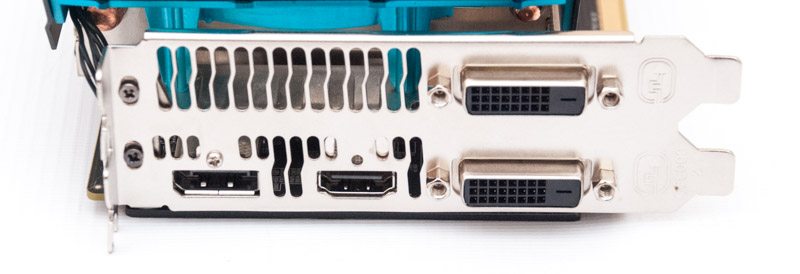Sapphire Radeon R9 290X Vapor-X OC 8GB Review
Ryan Martin / 10 years ago
Introduction and A Closer Look
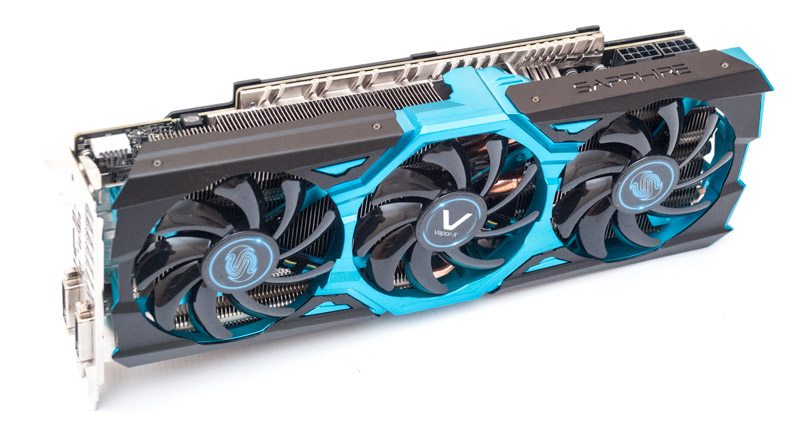
The R9 290X has led AMD’s single GPU offerings for what seems like quite a long time now. Released in October 2013 the R9 290X is only a year old but it’s ageing process has been accelerated by successive faster Nvidia graphics cards; the GTX 780 Ti and recently the GTX 980. To ensure competitiveness in the market place AMD has maintained the R9 290X at an attractive price point although Nvidia’s GTX 980, being a generation ahead in architectural terms, has thrown a spanner in the works. Many AMD partners have taken it upon themselves to issue price cuts on the R9 290X, independent of AMD’s official pricing guidance. On the wave of the R9 290X price cuts today we are assessing Sapphire’s newest launch: the R9 290X Vapor-X 8GB graphics card. It uses an identical cooling solution to the 4GB Sapphire R9 290X Vapor-X and it’s also visually similar to the Tri-X cooling solution equipped on slightly cheaper Sapphire cards, except with a different colour scheme. The obvious flagship feature of this new card, is the doubling of VRAM, aimed at gamers tackling the newest video-memory-intensive titles like Middle-earth: Shadow of Mordor.
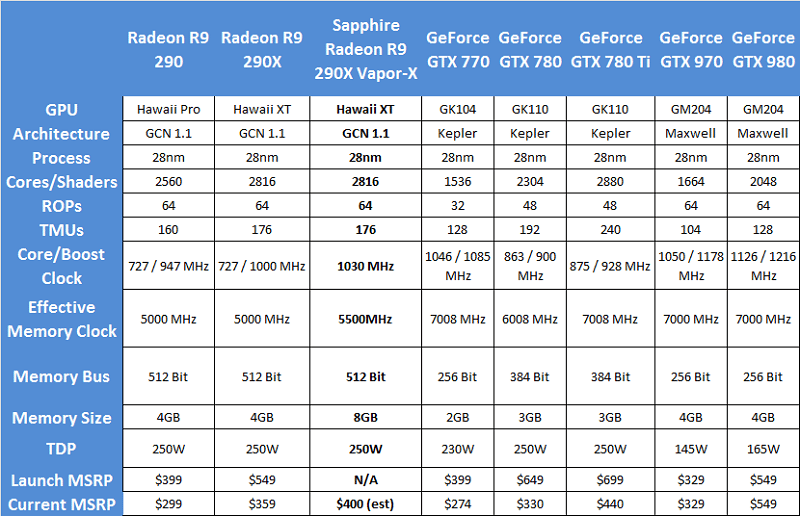
Packaging and Accessories
The packaging and accessory bundle is a much better equipped than most R9 290X’s on the market as it includes a free mouse-mat, HDMI cable and dual power adapters.
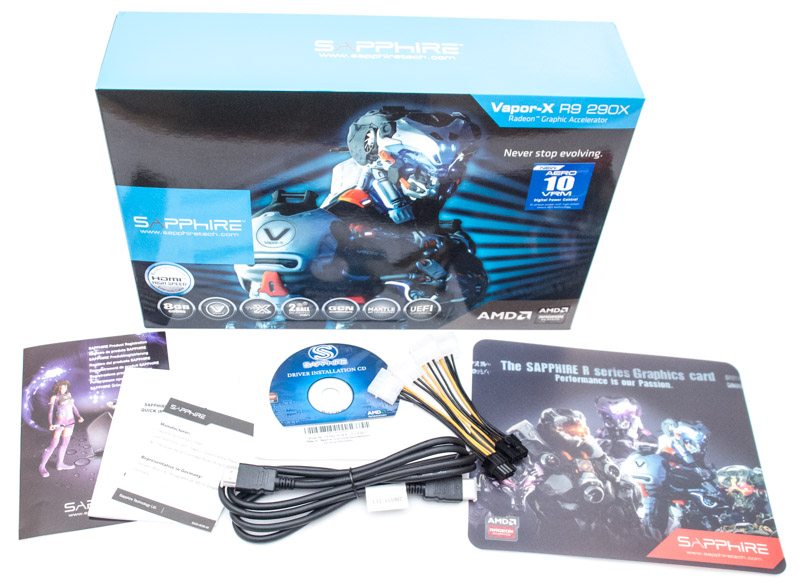
A Closer Look
The card itself is a sheer monster: triple fan, triple slot and backplate equipped.
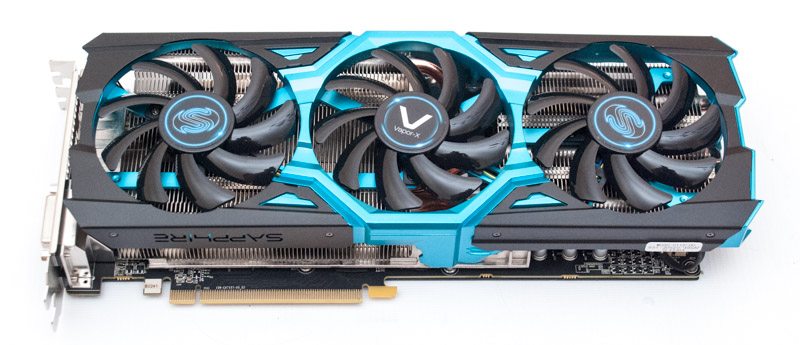
At the bottom we find a rather dense vapour-chamber style heatsink.

At the end of the card we get a glimpse at the five heat-pipes being used. There’s a trio of 8mm heat-pipes at the centre of the contact and a couple of 6mm at the edge of the GPU.
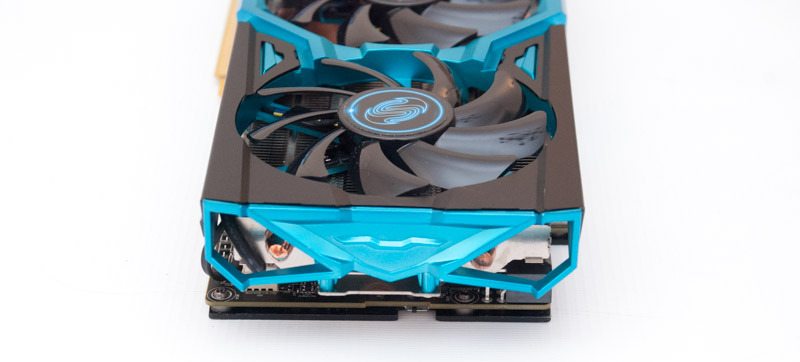
The card nearly takes up three slots in thickness which isn’t surprising given how hot the R9 290X can run: you need a lot of heatsink to tame Hawaii. Along the top we find a pair of 8 pin connectors for power delivery and a BIOS switch for switching between UEFI and legacy BIOS operation modes.
On the rear of the card we find a nice looking backplate and individual heatsinks for the VRM phases: pretty cool!
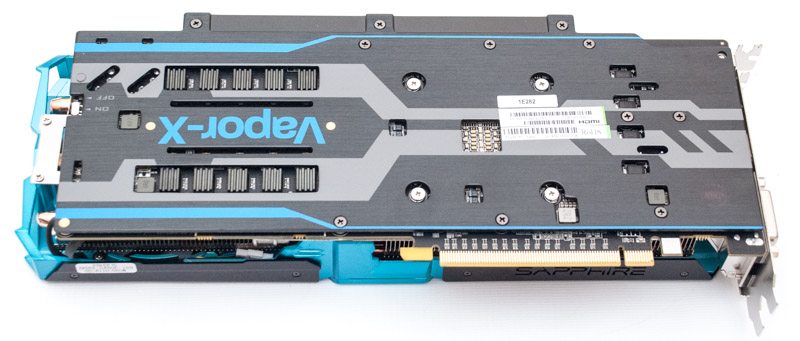
The I/O offers a pair of DVI, HDMI and a DisplayPort. That’s enough connectivity to power six displays with the help of a DisplayPort MST hub.
